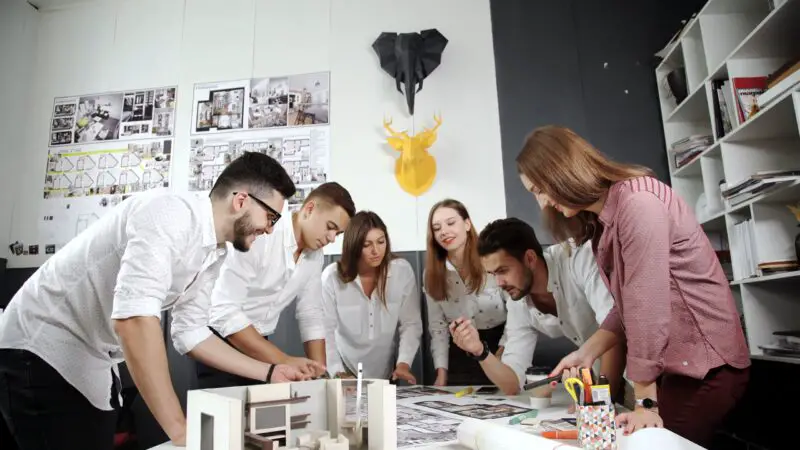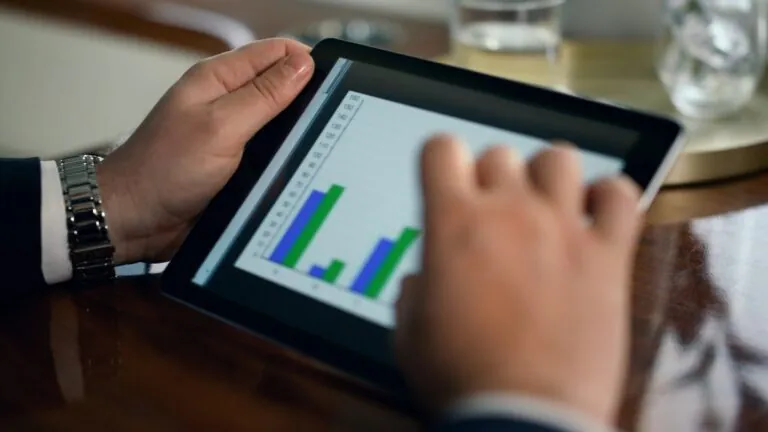Design Thinking stands is one of the most effective methods in product development, hands down. It undertakes a user-centric problem-solving approach in a sea of methodologies to enhance creativity and find practical solutions.
At its core, it is rooted in understanding and addressing user needs, thereby coming up with a solutions-based approach that places human experiences at the front of product design and development.
A clear indicator of its efficiency is that 71% of organizations who utilize this approach report it has improved their working culture on a team level.
The iterative nature of Design Thinking consists of five stages:
- Empathize
- Define
- Ideate
- Prototype
- Test
Now, let us go through each of these stages.
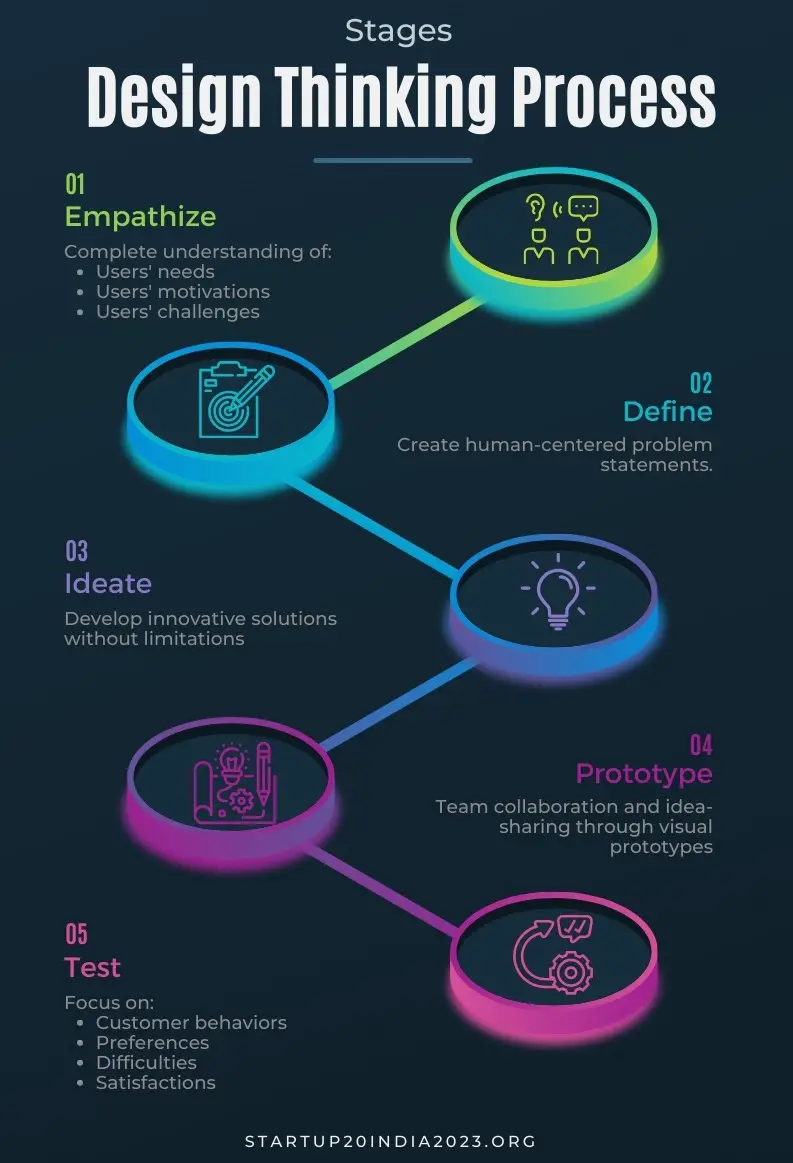
Table of Contents
Toggle1. Empathize

The Empathize stage is the foundation upon which Design Thinking is built. It consists of having a complete understanding of:
- Users’ needs
- Users’ motivations
- Users’ challenges
It is an initial phase that involves direct engagement with users through methods such as interviews, surveys, and observation, aiming to immerse the problem-solvers in the user’s environment and experience. The goal is to gather empathic insights, focusing on the emotions, thoughts, and underlying needs of the users.
This stage is critical for shedding light on real problems and opportunities, ensuring that the solutions developed are not just innovative but genuinely address the users’ needs. Innovation just for the sake of innovation will not bear fruit; you can be sure of that.
Empathy is, without any doubt, a foundation of human-centered design.
2. Define

In the Define stage, the insights gathered during the empathize phase come together to express clear, human-centered problem statements. This is where observations turn into action, guiding the design process by identifying the core problems that need solving.
The essence of this stage lies in its ability to distill complex user feedback and observations into specific, actionable, and human-focused problems. Challenging assumptions and reframing the problem in a user-centric way helps the Define stage set a clear direction for the ideation process.
With that in mind, framing the question should be done from the perspective of the consumer, rather than the manufacturer. It ensures that the team is not just solving a problem, but the right one as well, thereby maximizing the impact of the design efforts.
This clear, focused problem statement acts as a guiding light for the subsequent stages, ensuring that creativity and innovation are directed towards solutions that enhance user satisfaction and meet real needs.
3. Ideate

The Ideate stage is the brainstorming engine, where the constraints of reality are suspended to explore the broadest possible array of ideas and solutions. Following a clear definition of the problem, this stage encourages the challenging of preconceived notions and the exploration of innovative approaches.
Through methods like brainstorming sessions and assumption challenging, a range of solutions is generated, aiming to address the problem statement developed in the Define stage.
This is an important phase because it enhances creative thinking, as it opens up the floor to novel ideas that might not emerge within the confines of traditional problem-solving methodologies. While this stage should be flexible, it should also have some constraints.
Why?
The reason is quite simple: going away from the initial concept is not always a good thing to do since it can lead to time-wasting. Nobody likes to waste time, right?
Interesting Fact: Design-led firms consciously put the customer first, with 46% of design leaders citing an emotional bond with customers as a defining characteristic.
4. Prototype
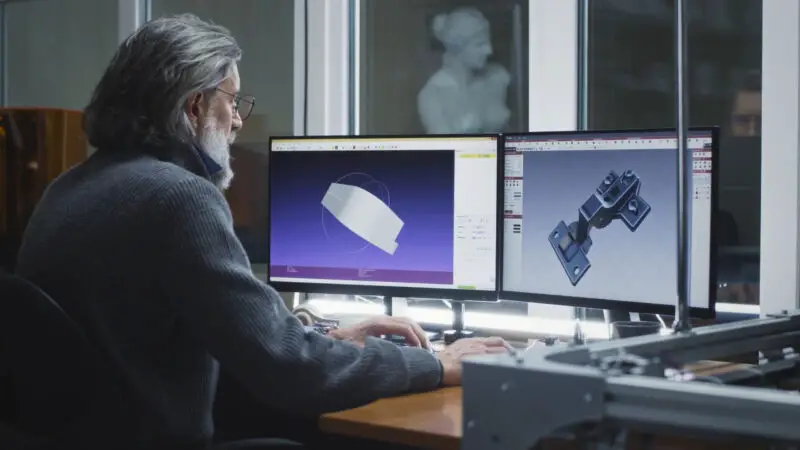
Prototyping is where ideas begin to take physical form. This stage involves the creation of scaled-down versions of the products or solutions, ranging from low-fidelity to high-fidelity prototypes.
The primary objective here is clear: to transform the abstract ideas generated during the Ideate phase into tangible experiences that can be interacted with, tested, and refined.
Prototyping enables designers to fail fast and learn quickly. Through learning about the flaws and areas for improvement early in the design process, teams can make necessary adjustments without the high costs and delays that would come from making changes to a fully developed product.
This part of the process also serves two purposes within the framework:
| Purpose | Description |
|---|---|
| Communication Tool | Enhances team collaboration and idea-sharing through visual prototypes. |
| Iterative Process | Facilitates learning and adaptation by uncovering challenges and user needs during testing. |
5. Test
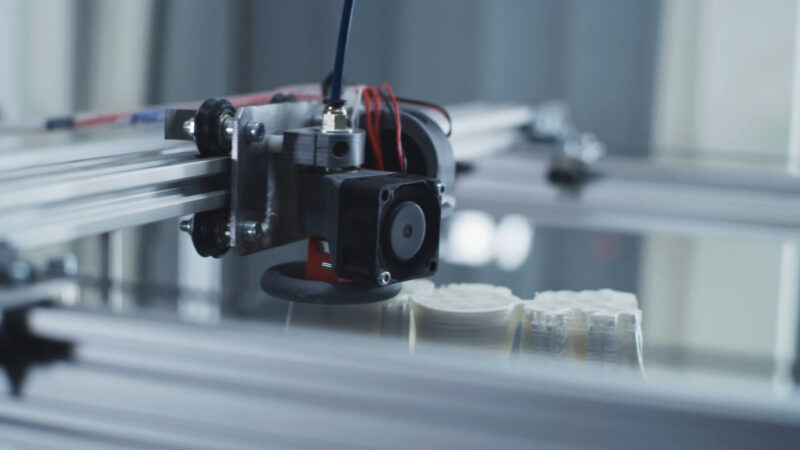
Testing is the final stage. It focuses on evaluating the prototypes with real or representative users to gather feedback on their functionality, usability, and overall user experience. This stage serves to identify what works and doesn’t, enabling designers to refine and improve their solutions based on real user interactions.
It’s a phase where designers and developers closely observe users interacting with prototypes. While they observe, they focus on:
- Customer behaviors
- Preferences
- Difficulties
- Satisfactions
This stage embodies the iterative and user-centric nature of Design Thinking, ensuring that the final products or solutions are not only innovative but also highly tailored to meet user needs and expectations.
Summary
The Design Thinking process, with its stages of empathizing, defining, ideating, prototype, and testing, offers a structured yet flexible framework for innovation and problem-solving.
It fosters creativity, teamwork, and collaboration by focusing on understanding user needs, challenging assumptions, and exploring a wide range of solutions.


